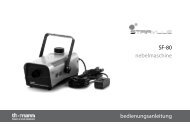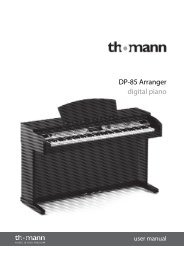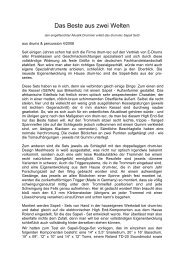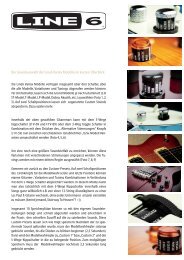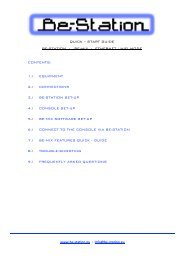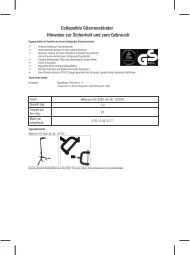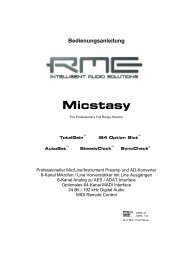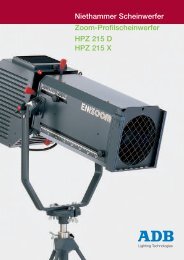Create successful ePaper yourself
Turn your PDF publications into a flip-book with our unique Google optimized e-Paper software.
Using sends for parallel processing<br />
Parallel processing for multiple channels is the main reason for using sends.<br />
There are a variety of situations when you might want to use parallel processing. For example, you may want to send a small<br />
amount of the hihat and snare channels to a reverb or flanger on an aux channel, or compress all the kick channels through a<br />
compressor, while also leaving the original signals in the mix. These kinds of methods are commonly used in drum mixing.<br />
Set up an aux channel with the desired FX on them. Create the required sends to the aux from each channel, and set each send<br />
level as required.<br />
If you only want to perform parallel processing on a single channel, you can simply use the Mix control on the channel’s FX.<br />
Using Sidechaining<br />
Sidechaining is the use of one signal to control the behaviour of an amplitude-sensitive processor that acts on another signal. It is<br />
not heard in the output of the processor at all. It is a common feature in compressors, in order to compress one signal according<br />
to the amplitude of another.<br />
BFD2’s mixer allows you to use any internal channel as a sidechain source for a compressor or gate inserted on any other channel.<br />
In addition, the sidechain is also available to feed the filter FM function in the Filter effect.<br />
Setting up a sidechain<br />
To set up a channel as a sidechain source for a compressor<br />
on another channel, first set up a send to the<br />
channel that is going to be compressed, and turn up<br />
the level of the send.<br />
Then, click the Sidechain button for the send in the<br />
Sends inspector.<br />
This Send is now routed to the sidechain of the channel<br />
that you want to compress.<br />
Now insert a compressor on the destination channel<br />
and click the SC button on the compressor interface.<br />
The compressor now reacts to the sidechain signal<br />
rather than the actual signal in the channel.<br />
EQ-ing the sidechain<br />
A common problem when compressing is the existence of<br />
excessive low-end frequencies in a sidechain signal causing<br />
a compressor to react more than desired. The BFD2 compressors<br />
include a sidechain highpass filter to quickly filter<br />
out the low end from a sidechain signal.<br />
However, you may need to apply a more complex EQ<br />
process to a sidechain signal in order to isolate a particular<br />
band of frequencies, such as the mid ‘crack’ of a snare<br />
sound. BFD2’s EQ processor provides a way of doing this.<br />
Insert an EQ on the channel that you want to compress,<br />
making sure that it is before the compressor in the list of<br />
inserts. If you then click the SC button on the EQ interface,<br />
the EQ processes the sidechain instead of the channel signal.



